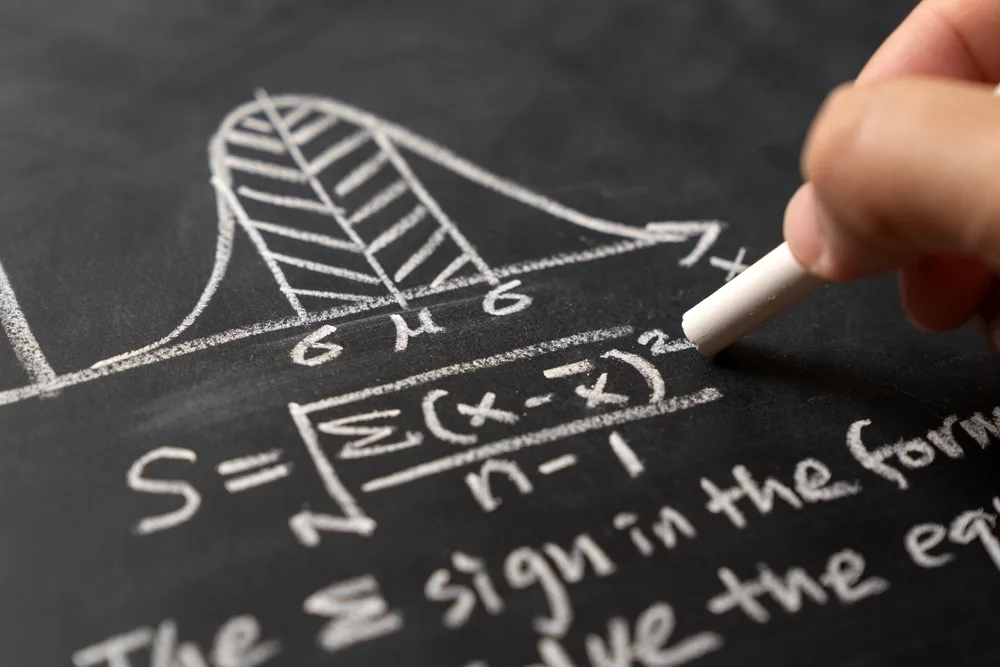Calculate Your Success
Statistics is an important skill for anyone involved or are interested in the measurement and prediction of trends in either markets, science, the environment or health science. It is one of the true tools that is cross-disciplinary. This course provides the most essential knowledge and skills required by consultants and researchers in a wide variety of disciplines.
Course Aims:
- Become familiar with different statistical terms and the elementary representation of statistical data.
- Become familiar with distributions, and the application of distributions in processing data.
- Apply measures of central tendency in solving research questions
- Demonstrate and explain the normal curve, percentiles and standard scores.
- Explain methods of correlation that describes the relationship between two variables.
- Make predictions with regression equations.
- Determine how much error to expect when making the predictions.
- Explain the basic concepts of underlying the use of statistics to make inferences.
- Analyse the difference between the means of two groups with the t Test.
- Describe the use of ANOVA (Analysis of Variance) in analysing the difference between two or more groups.
- Apply the concept of Non Parametric Statistics
There are 10 Lessons in this course:
- Introduction
- Key terms and concepts: data, variables
- Measurements of scale: nominal, ordinal, interval, ratio
- Data presentation
- Probability
- Rounding of data
- Scientific notation
- Significant figures
- Functions
- Equations
- Inequalities
- Experimental design
- The normal curve
- Data collection
- Simple, systemic, stratified and cluster random sampling
- Remaining motivated to learn statistics
- Distributions
- Scope and nature of distributions
- Class intervals and limits
- Class boundaries
- Frequency Distribution
- Histograms
- Frequency polygons
- Normal distributions
- Other distributions
- Frequency curves
- Measures of central tendency
- Range, percentiles, quartiles, mode, median, mean
- Variance
- Standard deviation
- Degrees of freedom
- Interquartile and semi interquartile deviations
- The Normal curve and Percentiles and Standard Scores
- Normal distribution characteristics
- Percentiles
- Standard scores
- Z scores
- T score
- Converting standard scores to percentiles
- Area under a curve
- Tables of normal distribution
- Correlation
- Scope and nature of Correlation
- Correlation coefficient
- Coefficient of determination
- Scatter plots
- Product movement for linear correlation coefficient
- Rank correlation
- Multiple correlation
- Regression
- Calculating regression equation with correlation coefficient
- Least squares method
- Standard error of the estimate
- Inferential Statistics
- Hypothesis testing
- Test for a mean
- Errors in accepting or rejecting null hypothesis
- Levels of significance
- One and two tailed tests
- Sampling theory
- Confidence intervals
- The t Test
- Assessing statistical difference with the t test
- t Test for independent samples
- t Test for dependant (paired) samples
- Analysis of variance
- Scope and application of ANOVA
- Factors and levels
- Hypothesis
- Calculate degrees of freedom
- Calculate sum of squares within and between groups
- Calculate mean square
- Calculate F
- Chi square test
- Chi square goodness of fit test
- Calculate degrees of freedom
- Chi square test of independence
- Calculate expected frequencies
- Degrees of freedom
- Contingency tables
- Find expected frequencies
- Calculate degrees of freedom

